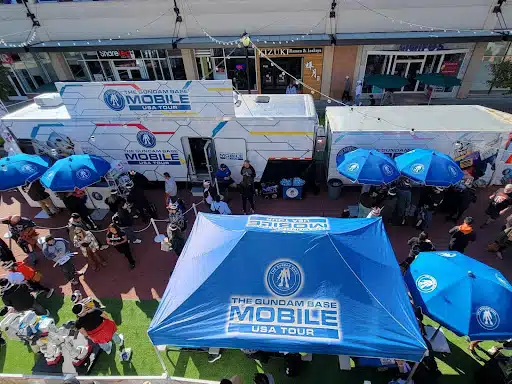If there’s anything we can learn from the internet fervor around Caroline Calloway, it’s that modern audiences highly value authenticity — either you are praised for having it, or the target of internet scorn for faking it. Authenticity is just as important for brands. In fact, “authentic marketing” is a goal for many modern brands. But what is authenticity?
Psychologist Kennon Sheldon explains authenticity as people acting in ways that reflect their values and identity. In marketing, being authentic means matching the marketing with what a customer will actually experience with your product. For example, a furniture brand trying to portray authenticity could market how their furniture would look in the average Millennial apartment, rather than dressing up their advertising with glamour. Authenticity also means communicating in your own true voice, rather than trying to copy the style of others. Some people also equate authentic marketing with honesty and integrity.
As we’ve written about previously in Top 10 Reasons Experiential Marketing Works: Part 1, authenticity is important to successful marketing. A study by Cohn and Wolfe revealed that customers weigh brand integrity higher than product quality! Plus, as audiences have ever increasing options for what content they consume, anything that feels intrusive or irrelevant is filtered out. Put simply, being authentic can increase sales and brand loyalty. In the Cohn and Wolfe study, almost 9 out of 10 consumers reported they would reward a brand for authenticity. How can your brand harness authenticity to reach your audience?
How to be authentic
- Know Yourself
As mentioned previously, part of being authentic means acting in line with your values and purpose. To do that successfully, you first need to identify what your business stands for. Ask yourself, “Why does this business exist? And why does it matter?” One strategy is to share the purpose of your brand like you’re talking to a friend. Ask yourself how you want people to think of your brand, and then make sure your brand delivers on that perception. Don’t try to portray what you think will come across as authentic — savvy consumers can sense when it’s faked. Once you’re clear about your brand’s values, make sure you also walk the walk! Your marketing will fall flat if your company doesn’t follow up on your claims.
2. Don’t market a product
This might feel counter-intuitive, but: market your brand, not your products! Once you have a clear mission and set of values, portray that in your marketing. Patagonia is a great example of this approach. Their first television ad in 2017 had nothing to do with clothes. Instead, the company, knowing their audience values conservation, advocated for the importance of protecting public lands. Patagonia’s “Don’t Buy This Jacket” ads may seem unlikely to drive sales, but their customer base rewards the brand’s integrity and clear values.
3. Employ people who embody your brand
Who you hire says a lot about your authenticity. The people who work for you are the face of your brand, so it’s especially important to hire employees who possess the right attitudes. A good practice is to hire for attitude, train for skill. You can teach employees about your product, your company policies, and other details, but someone’s values, personality, and disposition can’t be faked. Your company’s efforts in authentic marketing will be wasted if your employee’s attitudes aren’t consistent with the values you want to promote.
4. Be transparent
Transparency has become synonymous with authenticity. Successful brands such as Everlane have gone so far as to emphasize “Radical Transparency” as one of their core values, showing their customers exactly where the materials that make up their products come from, and how much they cost. To master transparency, give people a look at how you run your business and how your product is made. You can also “pull back the curtain” on your business and highlight the people running your operations. Give customers a glimpse into your day to day process, and you’ll be able to set yourself apart from the companies who keep these details under wraps.
5. Maximize user generated content
According to a report by Percolate, 86% of millennials believe that user generated content (UGC) is a good indicator of whether a brand is good and trustworthy. Highlight your customer reviews, customer-submitted photos, and other UGC in your marketing. One brand that harnesses UGC effectively is NYX. NYX worked with their customers to create a large library of authentic images to give an accurate picture of what products might look like on someone with similar attributes. NYX customers who interact with UGC convert at a rate 320% higher than those who don’t!
What does all of this mean for event and experiential marketing?
We know that consumers want to know who a company employs, what the brand stands for, have two-way conversations with brands, and want to feel heard and included. Experiential marketing is the best course of action to satisfy the wishes of today’s consumers. Here are some do’s and don’ts for mastering authenticity in experiential marketing:
Do: Hire brand ambassadors who are highly trained not only on your products, but also your brand messaging. Hire based on attitude as much as skill.
Don’t: Plan the biggest, flashiest stunt you can without considering whether you’re resonating with your target audience. In the effort to look the most exciting and creative, your events will look gimmicky — and anything that feels like a ploy is the opposite of authentic.
Do: Consider how to reach and connect to the audience you want to engage. Create a meaningful experience for someone, no matter how small.
Don’t: Slap your logo on everything and expect that to work. A thoughtful and meaningful experience will always have more impact than sponsoring a large event that does not resonate with your brand’s mission and values.
Do: Tell a good story. Have a creative concept with a narrative. Simply demonstrating a product won’t create emotional connections that have real impact on customers. Tell the story of your business: That story, when told well, will engage and inspire your audience.
Authentic experiential marketing in action
 A great example of this approach is the KaBOOM! Playful City USA Leader’s Summit. Pro Motion partnered with KaBOOM! to in a summit sponsored by the Humana Foundation. Participants engaged in deep discussion regarding their communities’ challenges, and real goals and solutions to implement spaces for daily play. KaBOOM! partnered with Pro Motion, Inc. to produce the 2-day event, and to transform an urban community center into a playful space that sparked creativity and play in the attendees. To achieve authenticity, the space and activities for the event needed to reflect both KaBOOM!’s mission and the playful attitude of its employees.
A great example of this approach is the KaBOOM! Playful City USA Leader’s Summit. Pro Motion partnered with KaBOOM! to in a summit sponsored by the Humana Foundation. Participants engaged in deep discussion regarding their communities’ challenges, and real goals and solutions to implement spaces for daily play. KaBOOM! partnered with Pro Motion, Inc. to produce the 2-day event, and to transform an urban community center into a playful space that sparked creativity and play in the attendees. To achieve authenticity, the space and activities for the event needed to reflect both KaBOOM!’s mission and the playful attitude of its employees.
Pro Motion has years of experience helping brands portray themselves authentically. If you’re interested in being the next success story, call us at 636-577-8507 today!
Learn More About Steve Randazzo’s book, Brand Experiences: Building Connections in a Digitally Cluttered World. Click here to download free chapters!




